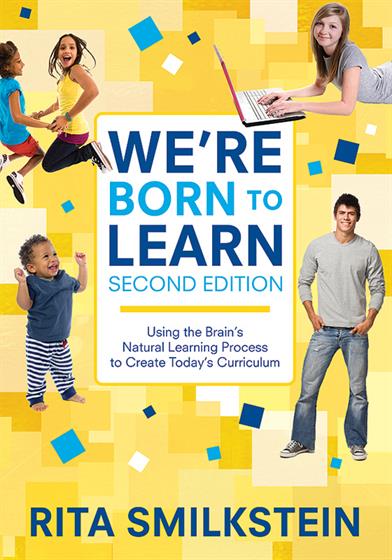Foreword by James H. Berry
Preface
Acknowledgments
About the Author
Introduction
What This Book Is About
Why Study the Brain?
Experienced Educators and the Research
The Learning Paradigm
Assumptions
Where We Have Been
Where We Are Today
This Book
PART I: Research in the Classroom and in the Brain Lab
1. Learning and Teaching
Eye-Opening Experiences in the Classroom
The Natural Human Learning Process and Brain Research
The Breakthrough Classroom
The Research-Based Stages, Curriculum, and Lesson Plans
2. How People Learn: The Natural Human Learning Process (NHLP)
Critical and Creative Thinking by Infants and Children
An Example of Children’s Critical and Creative Thinking
Critical and Creative Thinking in School
The Natural Human Learning Process and School
The Natural Human Learning Process (NHLP) Research
After the Research Is Over
Research Reports
The Importance of Making Mistakes
Where We Go From Here
3. How the Brain Learns: The Brain’s Natural Learning Process
Introducing the Brain
Getting to Know the Brain
How the Brain Learns
Convergence of Ceiling Levels and Neural Networks
Pruning
Experience and Brain Growth
Constructivism
How the Brain Thinks and Remembers
The Brain’s Innate Resources and Rules
Children’s Brains and Adults’ Brains
The Brain Grows Holistically with Plasticity
Implications for Curriculum Development
What About Piaget?
The Breakthrough Theory of Learning
4. Personal Experience, Individual Differences, and Learning
Emotions and the Brain
Negative and Positive Self-Image Networks
Learning from Experience
Learning Styles, Preferences, and Multiple Intelligences
Gifted Students
Aptitudes
Special Needs, Learning Differences, Autism, ADD, and ADHD
The Seven Magic Words: See If You Can Figure It Out
Tests
Beyond Individual Differences
A Handout for Students
5. The Student’s Experience: Metacognition, Motivation, Self-Evaluation, Achievement, and Technology Self Taught
Metacognition and Motivation
Intrinsic Rewards
Removing the Barriers
Self-Evaluation and Metacognition
Another Metacognitive Experience
Achievement
Writing Samples
Age and Achievement
Technology Self Taught
PART II: Theory and Application
6. Sequencing of the Curriculum
Challenges
The Missing Link
Two Problems
Neuroscience and Education
Converging Research
The Theory and Guide
Putting the Theory into Practice
Thinking at Higher Levels
Constructing New Knowledge
Planning the Sequence of the Units or Topics in a Curriculum
Using a Causal Sequence
Learning Activities for Units and Topics
The First Activity
Two Classroom Examples
Students and the NHLP
Developing a Curriculum
Young Students Thinking at a High Level
The NHLP in the Classroom
7. The Pedagogical Model and Guidelines
Transfer
Four Effective Instructional Practices
NHLP Pedagogical Guidelines
Assessment
Education Courses or Faculty Development Programs
Good News
PART III: Using the Brain’s Natural Learning Process to Create Curriculum
8. Brain-Based, Natural Learning Across the Curriculum
The Seven Magic Words in Action
Safety
Respect
The Opportunity to Learn Naturally
The Critical First Stages
The Introduction-to-Poetry Unit
Front Loading
A Science Learning Activity about the Concept of Buoyancy
A Unit for Library Orientation
A Unit for Introduction to Safety Procedures
A Science Learning Activity about Water
A Unit for Learning How to Take Lecture Notes
The NHLP Planning Guidelines and Pedagogy
9. Curriculum Development for Units, Courses, and Programs
Where to Start
Curriculum Development Guidelines
A Unit on Literal and Inferential Meaning
A Unit on an Introduction to Egypt
A Unit on an Introduction to Fractions
A Basic Grammar Curriculum: A Sequence of Units for a Whole Course
A Developmental English Curriculum: Courses in a Program
References
General Bibliography
Index



